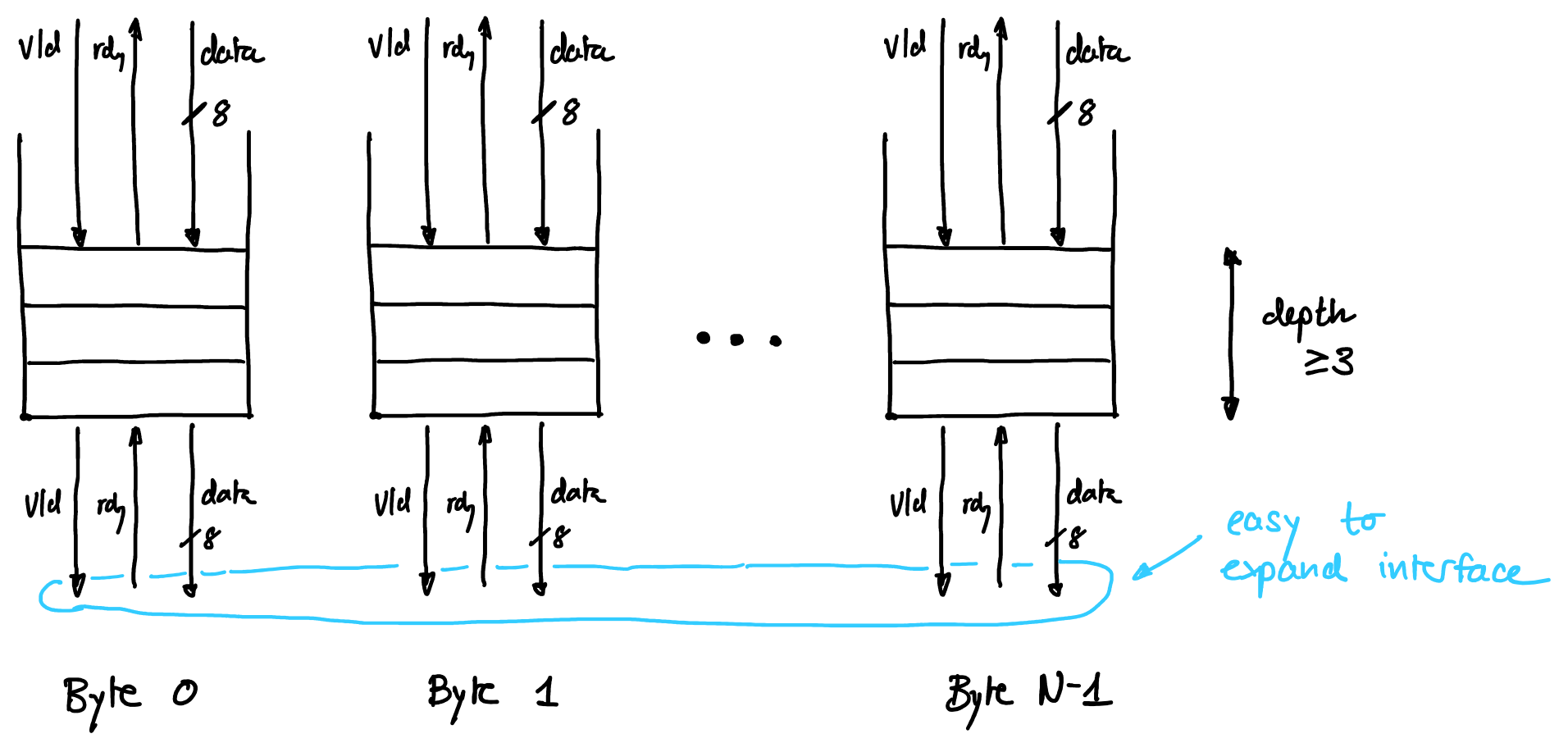iDMA Backend
The iDMA backend is responsible for generating valid AXI transfers from 1D requests at the request interface. It contains two important modules:

Parameters
Parameter |
Type |
Description |
|---|---|---|
|
|
Data width of the AXI bus |
|
|
Address width of the AXI bus |
|
|
ID width of the AXI bus |
|
|
User bit width of the AXI bus |
|
|
Bitwidth supported for transfers (16-64bit) |
|
|
|
|
|
|
|
|
|
|
|
|
|
|
Number of concurrent Ax requests in flight (1-32) |
|
|
Enable of error handling |
Future features:
VM: hardware tlb and ptw present (RISC-V, Snitch)
XOR Engine
Interface
The interface to the backend consists of three channels. All interfaces are ready-valid handshaked.
1D request
Packed in a 1d_request_t:
Field |
Type |
Description |
|---|---|---|
|
|
length of the transfer |
|
|
source address |
|
|
destination address |
|
|
additional transfer options |
Options in the options_t packet:
Field |
Type |
Description |
|---|---|---|
|
|
AXI ID to use for transfer |
|
struct |
Further options for src -> burst type, cache, qor, region, … |
|
struct |
Further options for dst -> … |
|
struct |
Further options for backend -> continue_on_error, deburst, decouple, serialize, couple_aw_ar |
DMA response
Field |
Type |
Description |
|---|---|---|
|
|
Error signal (0 is OK, 1 is error) |
|
|
Contains cause and other features TBD for error handling |
Error Handler
Contains commands for either continue, abort, or replay -> bit for each or 2-bit selector?
Legalizer
The legalizer is responsible for interfacing with the midend or frontend and generating valid AXI requests for the Transport Layer, as well as handling errors.
-
FSM
Abort -> flush
Continue -> w / wo reporting
Replay
Burst Splitting
Decouple
coalescing
asymmetric AW / AR
high-performance
Deburst
Serialize
AR-AW-coupling
Fixed Burst (/Wrapping Burst?)
Serialized
Deadlock prevention
Idle between 1D requests
No reordering between successive transfers of different AXI ID
Issue: alternating direction
AR-AW-Coupled
Send AW once R is received
Prevent congestion
Not compatible with high-perf decoupled mode
Replay on Error
Error handling
keep sent Ax in fifos
In-order transport layer
only one transfer is handled at the same time
head of fifo is running transfer
error response corresponds to Ax at head position
Replay is easy in serial mode
hust replay Ax in head, reordering of Ax within a 1D transfer is fine
Replay is harder in non-serial mode
we could have multiple Ax outstanding originating from different 1D trasfers possibly
we cannot reorder amongst different 1D tranfers: flush/replay all transfers in fifos
better performance during operation, larger penalty in error case
Transport Layer
The transport layer is responsible for the AXI communication, taking AW and AR requests and sending them, handling reads and writes with an intermediate buffer.
Full AXI4
dataflow-oriented
realignment
coalescing possible
always send size = bus size
sub-bus access required?
Buffer is isolated
ready/valid handshaking
byte granularity
Read / Write / Buffer: as modules
makes replacing them easy
add modules in write path
compression / encryption / parity / XOR
User signals:
R/W: route them through DMA?
AW/AR/B?
